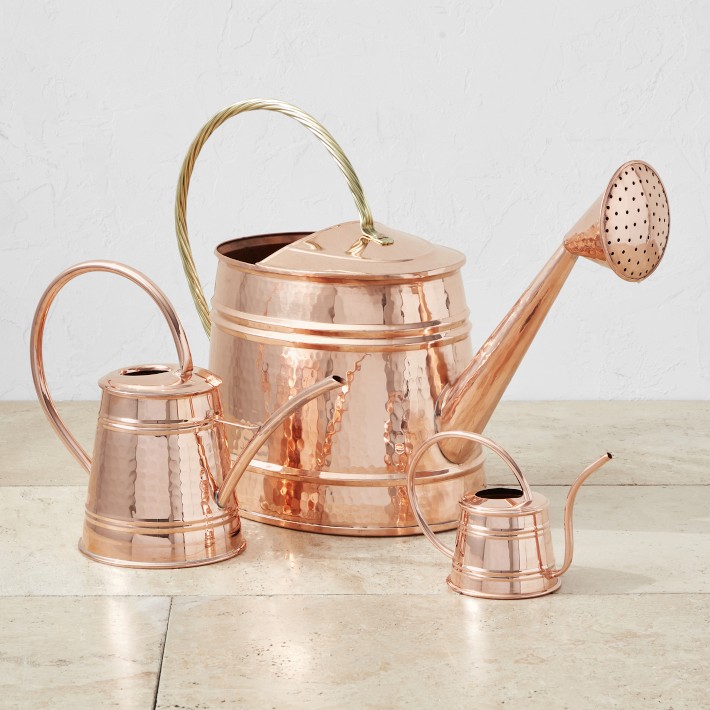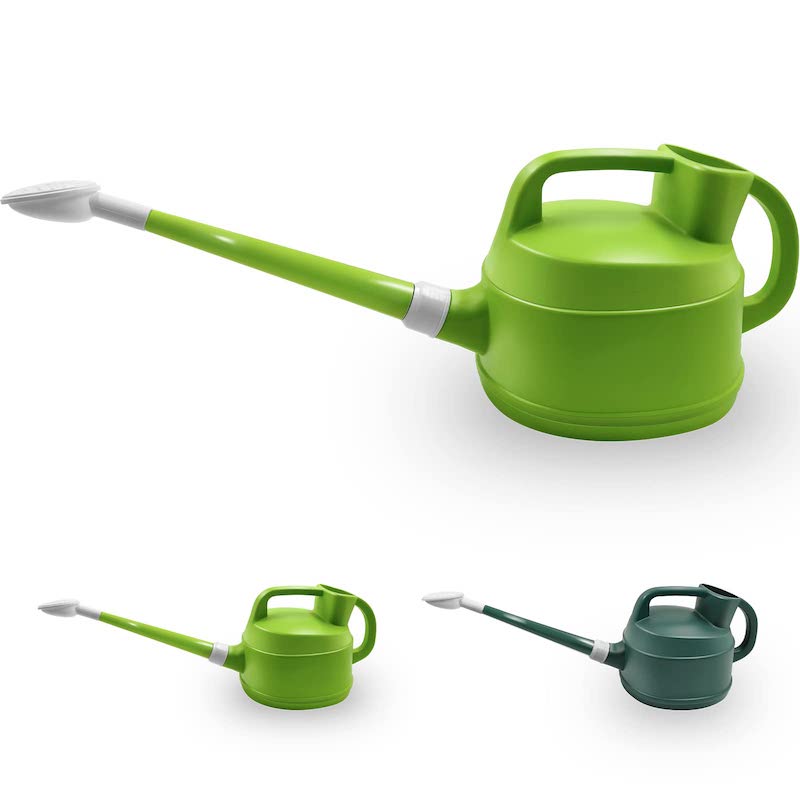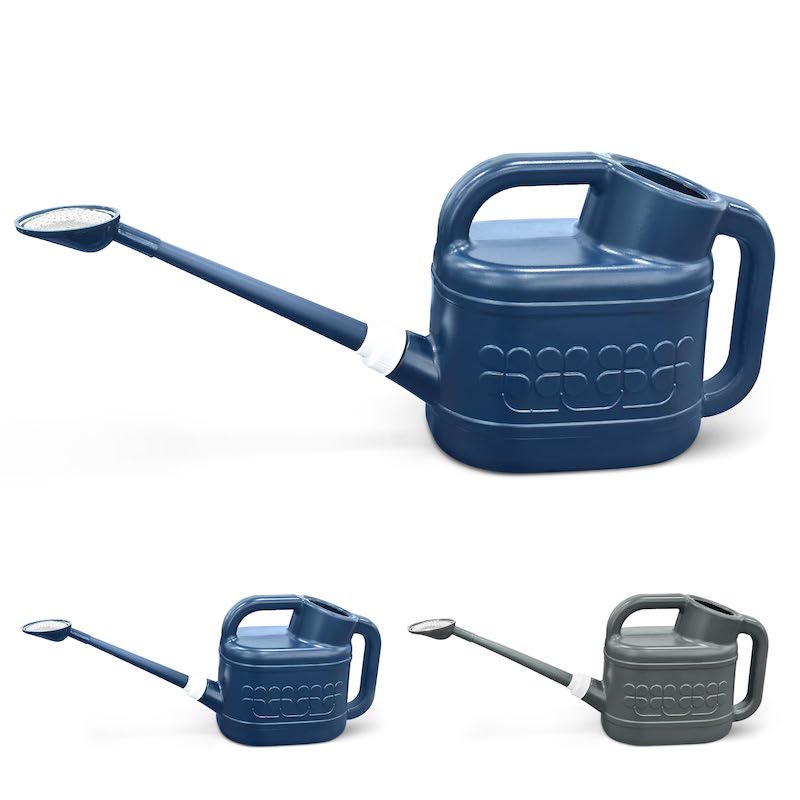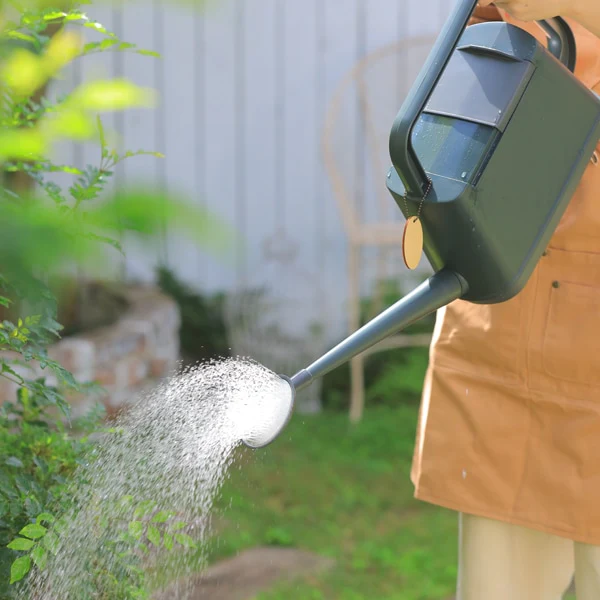
Japanese Watering Can: The Elegant Beauty Meets Functionality
The Art and Craftsmanship of Japanese Watering Cans
The Japanese watering can reflects a tradition of fine craftsmanship. Makers craft each can with care, ensuring not only beauty but also functionality. These watering cans often come from areas known for metalwork. Craftsmen use skills passed down through generations. They shape each piece with precision. Fine materials, like copper and brass, add to their elegance.
The making of a Japanese watering can is an art. Designers consider both form and function. They add details that make the cans not just tools, but also works of art. For instance, the spout design is a key aesthetic feature. The spouts are long and slender, allowing for a gentle flow of water. This design suits tender plants and seedlings well.
The handles are another aspect of their rich artistry. They offer a comfortable grip and balance. This ease of use shows the thoughtfulness in the Japanese approach. The balance ensures that gardeners can water plants with ease, a testament to the makers’ expertise.
Each Japanese watering can is unique. Artisans often leave their mark on every piece, symbol of pride in their work. Owning a Japanese watering can means having a piece of tradition. It also means appreciating an object that is both practical and beautiful.
Key Features That Make Japanese Watering Cans Unique
Japanese watering cans stand out for several reasons. Their distinct features not only set them apart aesthetically but also functionally. Here are the key elements that define their uniqueness:
- Precision Spouts: The spouts are long and narrow, designed to control water flow meticulously. This precision helps in watering small pots and delicate plants with ease.
- Craftsmanship: Each can showcases the craftsmanship of its maker. Handmade qualities ensure no two cans are identical, providing a sense of exclusivity.
- Material Quality: Made from high-grade copper or brass, Japanese watering cans resist corrosion. They sustain their luster over time, adding to their appeal.
- Balanced Handling: The handle design gives the user a comfortable grip and flawless balance. This feature makes watering effortless and precise, reducing strain on the arms.
- Aesthetic Appeal: Beyond function, these watering cans exhibit an aesthetic value. Their elegant shapes and lines make them decorative pieces in their own right.
By incorporating these features, Japanese watering can manufacturers achieve a harmonious blend of form and functionality. Each can serves not just as a gardening tool but also as an embodiment of traditional Japanese art. Gardeners often choose these cans for their reliability and the touch of refinement they add to gardening routines.
How Japanese Watering Cans Enhance Gardening Experience
Gardening is more than just a hobby; it’s an experience. Japanese watering cans translate that philosophy into a tool that enhances the overall gardening process. Their unique features are not just for show; they serve specific functions that can make gardening more efficient and enjoyable. Here are some ways Japanese watering cans can enhance your gardening experience:
- Precision Watering: Their carefully designed long and narrow spouts allow for precise watering. This helps gardeners nurture delicate flowers and seedlings without the risk of overwatering.
- Ergonomic Balance: The thoughtfully crafted handles provide an ergonomic advantage. They make holding and lifting the can easier, offering a balanced watering experience that is kind to your muscles.
- Aesthetic Enjoyment: The beautifully crafted designs turn watering into an aesthetic experience. Each glance at a Japanese watering can offers a visual delight, making every gardening session more inspiring.
- Longevity: The high-grade materials used in Japanese watering cans ensure they last for years. Their durability means better value over time, as the need for replacements is reduced.
- Quiet Serenity: The gentle flow of water from these cans adds a peaceful sound to the garden atmosphere. This contributes to a calming experience while tending to plants.
In conclusion, a Japanese watering can does more than water plants. It adds quality, beauty, and joy to the art of gardening. By choosing this tool, gardeners invest in an object that prioritizes both function and form, making each moment in the garden a sophisticated and serene affair.
Types of Japanese Watering Cans
In exploring the types of Japanese watering cans, one finds diversity in design and size. Below are some common types that exhibit the rich tradition and ingenuity behind their creation:
- Standard Cans: These are often the go-to choice for everyday gardening. They feature the classic long spout and a handle across the top. This design balances well in the hand for ease of use.
- Slim Cans: Perfect for small spaces and indoor plants, slim cans have narrower bodies. They are lighter and easy to manoeuvre in tight spots.
- Haws Cans: Named after a famous British design but embraced by Japanese artisans, these have a swan-neck spout. They’re great for gentle watering and reach under foliage.
- Tsuboishi Cans: Usually made from copper, these feature a unique, rounded shape. The name means ‘water jug stone’ in Japanese and reflects their pebble-like appearance.
- Modern Designs: Some cans incorporate modern elements like stainless steel. They offer a sleek look while maintaining functionality and durability.
Each type of Japanese watering can is designed not just for its utility, but to harmonize with the gardener’s needs, be it in a vast garden or a modest indoor setting. When choosing a Japanese watering can, consider the size of your garden, the types of plants you have, and the aesthetics that appeal to you. From standard cans to modern adaptations, the Japanese watering can embodies a blend of ancient tradition and contemporary gardening needs.
Choosing the Right Japanese Watering Can for Your Garden
Selecting the ideal Japanese watering can for your garden involves several considerations. Tailoring your choice to match your gardening style and the needs of your plants is crucial. Below are key factors to guide you in making the right selection:
- Assess Your Garden: Size matters. A larger garden will require a can with more capacity, while a smaller or indoor garden may benefit from a slim, lighter can. For large outdoor areas, a standard can might be most suitable, whereas for smaller indoor plants, a Tsuboishi or slim can would be more appropriate.
- Consider Plant Types: Delicate flowers and seedlings need gentle watering. A can with a long spout, like a Haws, is perfect for reaching under leaves and between tight plantings without causing damage.
- Comfort in Use: A can should feel good in your hands. Look for one with a handle design that offers a comfortable grip and balance to avoid straining while watering.
- Match Your Decor: If aesthetics are important to you, choose a can that complements your garden’s style. An elegant design can serve as a decorative piece when not in use.
- Storage Space: Don’t forget to account for where you will store your watering can. Ensure it fits comfortably in your garden shed or home without taking up excess space.
By considering these factors, you can pinpoint the best Japanese gardening can that brings efficiency and style to your gardening routine. Always remember, the keyword ‘japanese watering can’ not only signifies a gardening tool but an addition to your garden that combines functionality with artistic heritage.
The Importance of Material and Design in Japanese Watering Cans
The materials and design of a Japanese watering can are crucial. They dictate its durability, function, and aesthetics. Let’s delve into why these aspects are so important:
- Durability of Materials: Japanese watering cans often use copper or brass. These metals resist rust and last longer. You can count on these materials to uphold quality through the years.
- Functionality in Design: The design of a can affects its use. Long spouts provide precise watering. Balanced handles make cans easier to hold and pour. These features show how design enhances function.
- Aesthetic Qualities: Beauty is key in a Japanese watering can. Elegant shapes and polished surfaces catch the eye. They double as decor when not in use.
- Custom Design Elements: Artisans may add unique touches. Personal designs or symbols make each can special. They mirror the user’s style and the artistic tradition of Japan.
In short, when looking for a Japanese watering can, think about the material and design. They are not just about looks. They ensure the can serves well in the garden and lasts. Choose a can that is both practical and pleasing to the eye. Remember, with every use, you’re not just watering plants. You are holding a piece of art that values both your gardening needs and aesthetic pleasures. The phrase ‘japanese watering can’ stands for this harmony between beauty and utility.
Maintenance and Care Tips for Japanese Watering Cans
To keep your Japanese watering can in top condition, follow these simple maintenance and care tips:
- Regular Cleaning: After each use, rinse the can with water. It prevents buildup of minerals and dirt. If needed, use a soft brush to clean the spout.
- Proper Drying: Before storing, empty the can completely. This stops water from causing internal damage. Wipe the exterior with a dry cloth to prevent water spots.
- Avoid Chemicals: Stay clear of harsh cleaners. They can damage the can’s material. If you need to deep clean, use a mild soap and warm water mix.
- Polishing: For cans made of copper or brass, polish them occasionally. It keeps the metal shining. You can use a natural polish like lemon juice and salt.
- Storage: Store your can in a dry place. Protect it from extreme temperatures and direct sunlight. These conditions can cause the material to deteriorate.
- Inspection: Check the can regularly for signs of wear or damage. Look at seams and joints. Repair any leaks promptly to keep them functioning well.
By adhering to these tips, your Japanese watering can will continue to be both a useful tool and an attractive element in your gardening toolkit. Embrace the keywords ‘Japanese watering can’ as a symbol of care and quality that enhances your gardening practice.
Where to Find Authentic Japanese Watering Cans
Finding an authentic Japanese watering can be a delightful quest for any gardener. Here are practical avenues to explore:
- Specialty Gardening Stores: Many garden centers and specialty shops stock authentic Japanese watering cans. Look for stores with a focus on high-quality gardening tools.
- Online Marketplaces: Websites like Amazon and eBay often have listings for Japanese watering cans. Read seller reviews to ensure authenticity.
- Craft Fairs and Markets: Keep an eye out for local craft fairs or markets. Artisans sometimes sell their creations directly to the public.
- Direct From Japan: Consider buying directly from retailers or craftsmen in Japan. Online shops based in Japan may offer a wider selection.
- Collectors and Antique Shops: Some collectors and antique stores may have vintage or rare Japanese watering cans.
- Gardening Forums and Communities: Connect with fellow gardening enthusiasts. They might have tips on where to find these unique items.
Remember to verify the authenticity of the Japanese watering can before purchasing. Authentic cans often come with a maker’s mark or a certificate of authenticity. While searching, keep in mind the keywords ‘japanese watering can’ to narrow down your search to the genuine products. With these tips, you’re well on your way to acquiring a beautiful, functional piece of Japanese craftsmanship for your garden.
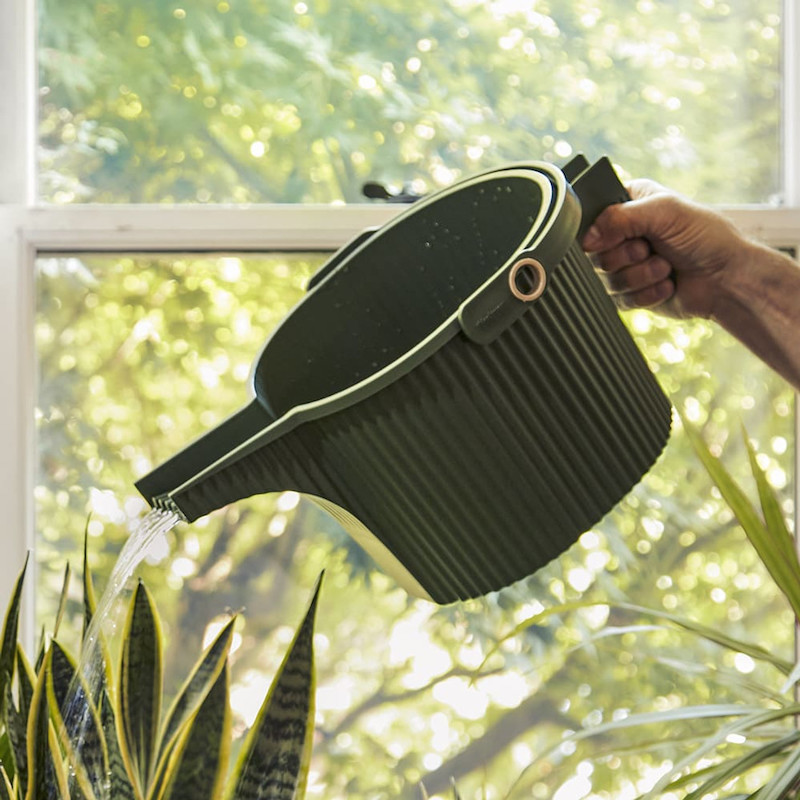
Japanese Watering Can: Mastering the Art with Japanese Cans
The History and Design Evolution of Japanese Watering Cans
Japanese watering cans have a rich history. Crafted in Japan, their designs reflect centuries of gardening tradition. Initially, these cans were simple, functional tools. Over time, they evolved into artistic symbols among garden tools. Early Japanese cans were often made from bamboo. This material was readily available and easy to work with. As metalworking techniques improved, artisans began crafting cans from metals like copper and brass. These metals increased durability and longevity.
Today’s Japanese watering cans may include modern materials like plastic. However, they still honor the traditional aesthetic. Designers focus on balance, precision, and beauty. Key features like long spouts and ergonomic handles are common. These features improve the watering experience. The evolution of design also reflects the importance of minimalistic beauty in Japanese culture. Even now, each can’s design serves both function and form.
These watering cans are not just tools but cultural artifacts. They tell the story of Japanese gardens and their keepers. With the right care, they last for many years, becoming heirlooms. Gardeners worldwide treasure them for their history and unique design elements.
Key Features of Japanese Watering Cans
When exploring Japanese watering cans, note their defining traits. These key features set them apart, adding value for gardeners. First, the long spouts stand out. They are slender and often curve elegantly. This design helps control water flow. It makes sure plants receive gentle watering without displacement of soil.
Durability is another feature. Many cans use metals like copper or brass. These materials resist rust and wear. They sustain frequent use while maintaining appearance. Some modern cans use high-quality plastics. These too can last and work well.
Ergonomic handling is crucial. The handles on Japanese watering cans balance weight. This makes them comfortable to carry. Even when full, the cans are easy to tilt and maneuver.
Aesthetic plays a huge role too. These watering cans showcase minimalistic beauty. They often have a simple, yet sophisticated look. Gardeners admire them for their functional elegance.
Lastly, they typically come in various sizes. This caters to different garden needs. Whether for indoor plants or larger outdoor settings, there’s a size that fits.
To sum up, Japanese watering cans feature long spouts, durability, ergonomic design, visual appeal, and versatile sizing. These attributes make them a top choice. Gardeners appreciate their practicality and the touch of tradition they add to gardening routines.
How to Choose the Right Japanese Watering Can for Your Garden
Choosing the right Japanese watering can is critical for any gardener. Consider several factors to find the perfect fit. First, think about size. A larger garden may need a can with a bigger capacity. Indoor plants usually require a smaller, more delicate can. Check the size to match your garden’s needs.
Next, evaluate the spout length and shape. Longer spouts reach plants in the back of beds with ease. They also water with precision to avoid water waste. For tight spaces or bonsai, a can with a shorter, more controlled spout helps.
Material is also key. Metal cans, like brass or copper, offer durability and charm. They often last longer and age gracefully. If you prefer lightweight options, high-quality plastic is an alternative. It can withstand the elements too.
Handle design matters for comfort. Look for a handle that feels good in your hand. It should allow easy tipping even when the can is full. A handle that balances the weight avoids stress on your arm.
Style might influence your choice. Many enjoy the traditional look of a Japanese can. It adds an aesthetic touch to the gardening experience. But, make sure style doesn’t sacrifice functionality.
Keep in mind the price range. Japanese cans can be pricier due to their quality and design. Decide on a budget that reflects the value you place on durability and beauty.
Finally, consider the can’s brand reputation. Seek out ones with positive reviews. Well-known craftsmen guarantee a can’s authenticity and quality craftsmanship.
To choose the right Japanese watering can, consider size, spout, material, handle, style, price, and brand reputation. Match the watering can to your garden’s specific needs for the best results.
The Role of Japanese Watering Cans in Precision Watering Practices
Japanese watering cans shine in the precision watering arena. Their meticulous design focuses on precise control and minimal waste of water. By using a Japanese watering can, gardeners can direct water right to the plant’s base. This targeted approach encourages root growth and reduces the splatter that can compact soil or spread diseases.
Targeted Watering
The long, slender spouts of Japanese watering cans make them ideal for targeted watering. They allow for reaching under leaves to deliver water directly to the roots. This precision prevents overwatering which is crucial for sensitive plants.
Control Over Water Flow
With narrow spouts, the water flow from these cans is fine and steady. Gardeners find it easier to manage water usage, which is important during droughts or water restrictions. The consistent flow also protects young or fragile plants from heavy water pressure.
Soil Preservation
Good watering practices maintain soil structure. The gentle water stream from Japanese cans prevents disrupting the soil. This is vital in protecting plants from root disturbances and maintaining healthy soil ecology.
Ideal for Indoor and Bonsai Gardening
Japanese watering cans are perfect for indoor gardens and bonsai trees. Their precise water delivery nurtures delicate plants and small root systems. It also allows for watering in tight spaces without making a mess.
These aspects reveal how Japanese watering cans contribute to careful and sustainable gardening practices. With their assistance, gardeners can ensure their plants thrive.
Tips for Maintenance and Care of Your Japanese Watering Can
To keep your Japanese watering can in top condition, follow these maintenance tips. Regular care ensures longevity and preserves the can’s beauty. Here are some simple, yet effective steps to take:
Cleaning After Use
Always clean your can after use. Empty any remaining water to prevent mold growth. Rinse the inside with clear water to remove any debris or buildup.
Proper Drying
Store the can upside down or hang it. This allows all the water to drain. Air-drying prevents rust and water spots, especially on metal cans.
Avoiding Dents and Scratches
Handle with care to prevent dents and scratches. These blemishes can harm the can’s aesthetic and integrity over time.
Polishing Metal Cans
If you own a metal Japanese watering can, like brass or copper, polish it occasionally. Use a soft cloth and a suitable metal cleaner to maintain its shine.
Checking for Leaks
Inspect your can regularly for leaks. Minor issues can often be fixed at home. For major leaks, seek professional repair to maintain the can’s functionality.
Proper Storage
Protect your can from harsh weather by storing it indoors. A dry place shields it from the elements. This is important for preventing damage from extreme temperatures.
Replacing Worn Parts
Maintenance may include replacing worn parts like washers. Keep your can’s spout and handle in good working order. This ensures precise watering and comfortable use.
Every Japanese watering can, with its history and design, deserves careful maintenance. With these tips, you can enjoy your can for years to come.
The Aesthetic Appeal of Japanese Watering Cans in Garden Design
Japanese watering cans are not just practical; they are a design feature for gardens. The simple, elegant lines of these cans complement any garden style. Whether displayed on a shelf or used among the flowers, they add a touch of sophistication.
The minimalistic design of these cans draws inspiration from Japanese aesthetics. It emphasizes less is more. Gardeners appreciate this for its calming effect in their spaces. The soft curves and lustrous materials can serve as a garden’s focal point.
In modern garden layouts, a Japanese watering can stands as a symbol of cultured gardening. They suggest a keen eye for quality and detail. Often, the can’s design encourages a functional conversation piece among garden enthusiasts.
The subdued tones of brass or copper can harmonize with green foliage. They create a warm contrast that appeals to the eye. Even plastic versions have a sleek look. They marry well with a variety of plant colors and textures.
Some gardeners use their Japanese watering cans as planters. This showcases the can’s beauty in a different way. When not in use, the cans serve as an artistic element. They tell a story of tradition and care invested in the garden.
In conclusion, Japanese watering cans offer aesthetic appeal in garden design. These cans blend utility with beauty. They accent the garden, reflecting a gardener’s thoughtfulness and style.
Popular Brands and Craftsmen of Japanese Watering Cans
When seeking a Japanese watering can, brand and craftsmanship matter. Certain brands stand out for their quality and aesthetic. Here, we highlight popular brands and craftsmen known for excellence in Japanese watering cans.
One revered brand is Haws, which, though British, offers cans with a Japanese design influence. Their cans are durable, ergonomic, and aesthetically pleasing. Another top choice is Takagi, a Japanese brand well-known for precision tools and watering devices.
Craftsmen play a key role in the quality of these watering cans. Skilled artisans from the Tsubame-Sanjo region of Japan are world-famous for their metalwork. They create cans that are not only functional but also works of art. The attention to detail and traditional methods ensure each can is unique.
Kondo Metal Works is a craftsman-led company with a great reputation. They make beautiful, handcrafted cans that last for decades. Seki brand, recognized for metal crafting, offers custom watering cans that cater to discerning gardeners.
For those who prefer modern materials, Sanko has made a name for themselves. They produce high-quality plastic cans that retain Japanese design principles. These come in various sizes to suit different gardening needs.
In summary, brands like Haws and Takagi, and craftsmen from Tsubame-Sanjo, are leading choices. Kondo Metal Works and Seki offer personalized craftsmanship. Sanko provides modern options. Each brand brings something special to the world of Japanese watering cans.
Comparing Japanese Versus Western Watering Cans
When it comes to gardening tools, the watering can is essential. Yet, not all cans are alike. Japanese and Western watering cans differ in key ways. Understanding these differences helps choose the right tool for your garden.
Design Philosophy
Japanese cans reflect a minimalistic design philosophy. They focus on simplicity and function. Western cans can be decorative but may lack the same attention to detail. Japanese cans often showcase slender spouts and elegant lines. Western ones might have a more utilitarian look.
Material and Construction
Most Japanese cans are metal, like brass or copper, chosen for durability. Western cans vary, from plastic to galvanized steel. The materials impact the lifespan and look of the can. Japanese craftsmanship tends to result in longer-lasting products.
Water Control
Japanese watering cans excel in water control. Their long spouts provide targeted watering. Western cans generally have shorter spouts. This can make precision harder to achieve. The flow from a Japanese can is steady and controlled, ideal for delicate plants.
Ergonomics
The ergonomic design of Japanese cans makes watering comfortable. Handles are crafted to balance the can’s weight, even when full. Western cans can be ergonomic but might not offer the same level of balance and ease of use.
Aesthetics in Gardening
Gardeners value Japanese cans for their aesthetic. They blend in well with garden design and can be a conversational piece. Western cans are functional, but may not enhance the garden’s visual appeal in the same way.
Price Comparison
Generally, Japanese cans cost more due to their quality and design. Western cans may be more budget-friendly but could sacrifice quality and longevity.
In conclusion, Japanese watering cans offer precision, durability, and beauty. They are crafted with care, making them a gardener’s pride. Western watering cans might be practical and cost-effective. Yet, they might not match the Japanese can’s performance or appeal.

